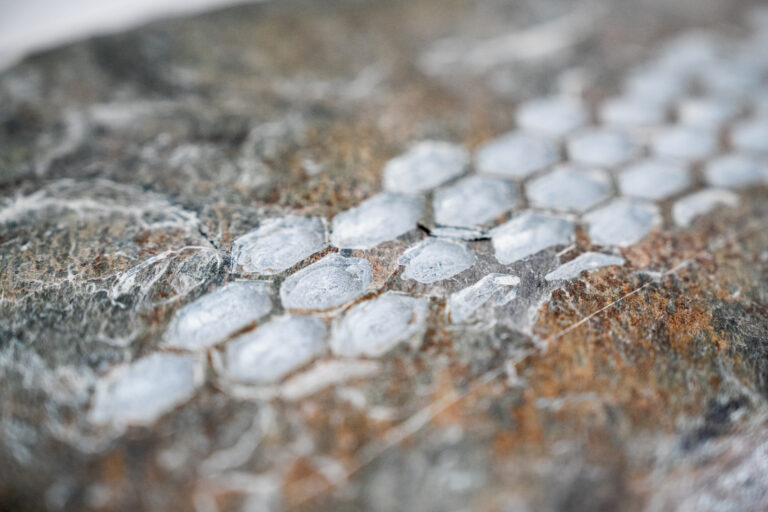Rise From the Breath
Rise From the Breath in the gallery Prám
exhibition with Julie Daňhelová
7 november – 29 November 2023
A fundamental interest of alchemy, otherwise a complex “proto-science”, is the work on the Opus Magnum. The idiomatic term from Latin describes the great work – that is, the creation of the Philosopher’s Stone. The Stone is a mythical substance capable of transforming base metals into gold, but also the mankind’s coveted elixir of youth, bringing healing and immortality. For obvious reasons, it has been a central symbol of alchemical terminology for many centuries, and because of its unattainability it has become a symbol of perfection, enlightenment and harmony, as well as a fabled magical object from fairy tales. It is a mystical metaphor for spiritual transformation and a frequent parable in all branches of art. The Opus Magnum, the successful production of the Philosopher’s Stone, is said to require personal sacrifice. This may be the easiest and most precious thing we have – our breath. The description of its production can be linked to the chemical changes of substances during known reactions, including the transformation of their colours. According to the original philosophy, it has four stages:
Nigredo
(A layer of graphite so thick that it shines like a diamond. Wax covered with soot. The used engined oil rides in sage caps in a circle until it dries out. A deep well, humus and night. The inexorable mirror of death.)
Albedo
(The lantern is the framed Moon. The overblown fluff flies away like steam from a crucible. Your scleras and stockings bleached by the Sun. Glints of sea foam in the shells. Salt devouring paint and metal. Purity.)
Citrinitas
(Well-thumbed pages of books, forgotten warmth. A fossil in an ancient slate. The sun is young, wake up and keep working! Sulfur flower. The strength and calmess of the dandelion, sinking into honey.)
Rubedo
(King and queen. The blood is circulating, triumph! The jester’s cap is as fateful as the hundred-petalled rose that pricked me. This is me! Perfectly placed moth poop.)
Alchemy and Hermeticism, because of their holistic approach, again seem to be the starting point for the search for many answers. Intense reflection on the human position and the realization that we are part of complex processes within a global biotope seems to be the way out of many social and ecological problems. As a precursor of modern science, highly separating rationality from the rest of perception, alchemy synthesizes multidisciplinary knowledge from the Middle Eastern scholars, from ancient Egypt, ancient China, India and finally from European Renaissance scholars. In addition to the notorious obsession with the production of the Philosopher’s Stone, alchemists, including the female ones (such as the famous Mary the Jewess, inventor of the laboratory water bath), were concerned with describing in detail the properties and behavior of substances whose rational and metaphorical knowledge would enable their enlightened guidance, leading to significant discoveries, harmony, and universal bliss.
The joint installation by Jindřiška Jabůrková and Julia Daňhelová does not only include the processes highlighted by the artists through their works throughout the duration of the exhibition. Water drips, limestone settles, pencil drawings appear black and white or silver-white depending on where you stand. The used oil dries into the gallery space, where it eventually blends with evaporated moisture and dust particles of slate and graphite, dusted from the symbolist imagery. This airy compound eventually becomes part of our collective breath, to which each of us adds our own alchemical ingredient.








